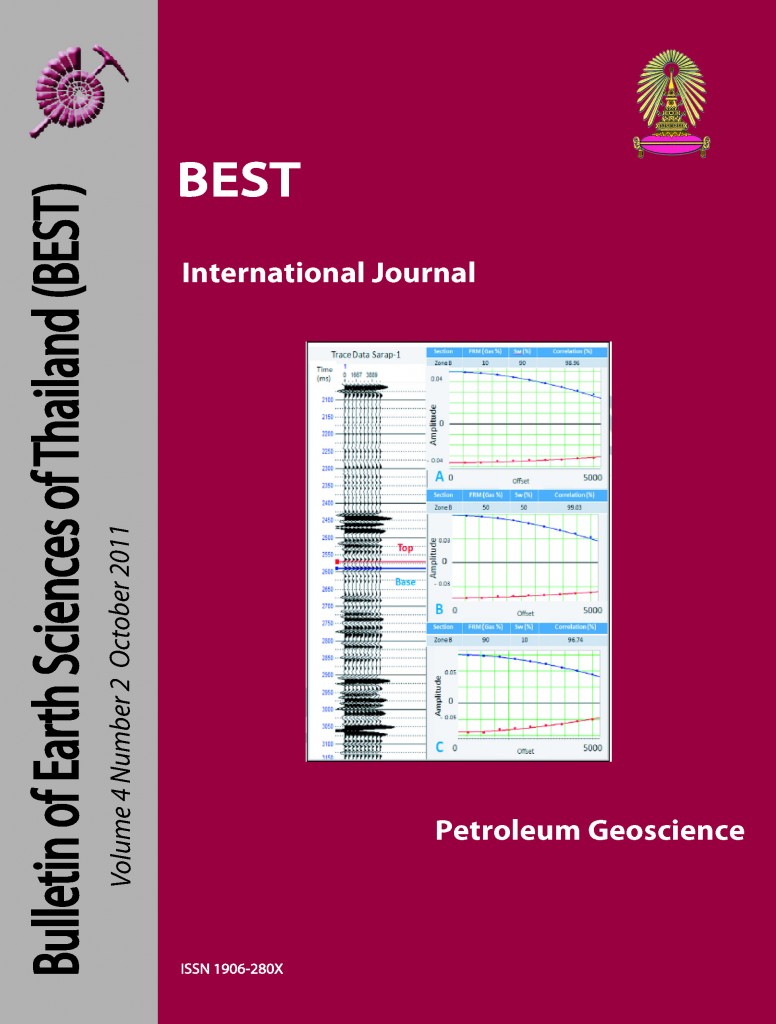Depositional Environment and Reservoir Properties of Shallow Oil in Plamuk Area, Pattani Basin, Gulf of Thailand
Main Article Content
Abstract
The distribution of oil in the shallow section (approximately 900 to 1500 m deep and near the mid-Miocene Unconformity (MMU)) in the Plamuk area, offshore Thailand was investigated using conventional core and wireline data. Four fluvial lithofacies were interpreted from a core collected in the Plamuk G-4 well, including stacked channel sands that correspond to a blocky, low gamma ray log signature. Stacked channel sands were identified and correlated in 226 wells across the Plamuk area and their distribution was compared to the occurrence of oil in the same stratigraphic intervals. The comparison indicates that the abundance and connectivity of stacked channel sands is one of the main controls on oil distribution and it is recommended that the distribution of stacked channel sands is integrated into future exploration and development scenarios. However, the correlation between oil occurrence and stacked channel sand distribution is not good enough to discount other factors (e.g. trapping and sealing mechanisms and migration pathways) as being equally important controls on oil distribution.
Article Details

This work is licensed under a Creative Commons Attribution-NonCommercial-NoDerivatives 4.0 International License.
Copyright © 2008 Department of Geology, Faculty of Science, Chulalongkorn University. Parts of an article can be photocopied or reproduced without prior written permission from the author(s), but due acknowledgments should be stated or cited accordingly.
References
Gary, N., 2009. Sedimentology & Stratigraphy. 2nd ed. John Wiley & Sons Ltd.
Rider, M., 1999. The Geological Interpretation of Well Logs. 2nd ed. Sutherland: Rider-French Consulting Ltd.


